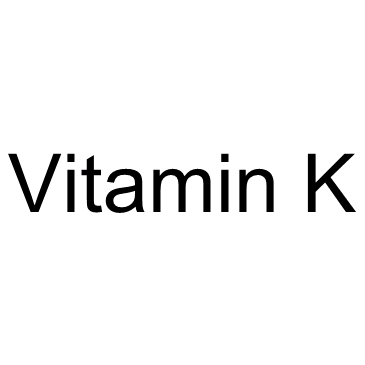CHEMICAL IDENTIFICATION
-
RTECS NUMBER :
-
ZA9040000
-
CHEMICAL NAME :
-
Vitamin K
-
CAS REGISTRY NUMBER :
-
12001-79-5
-
LAST UPDATED :
-
199701
HEALTH HAZARD DATA
ACUTE TOXICITY DATA
-
TYPE OF TEST :
-
LD50 - Lethal dose, 50 percent kill
-
ROUTE OF EXPOSURE :
-
Subcutaneous
-
SPECIES OBSERVED :
-
Rodent - mouse
-
DOSE/DURATION :
-
700 mg/kg
-
TOXIC EFFECTS :
-
Details of toxic effects not reported other than lethal dose value
-
REFERENCE :
-
ARZNAD Arzneimittel-Forschung. Drug Research. (Editio Cantor Verlag, Postfach 1255, W-7960 Aulendorf, Fed. Rep. Ger.) V.1- 1951- Volume(issue)/page/year: 8,25,1958 ** REPRODUCTIVE DATA **
-
TYPE OF TEST :
-
TDLo - Lowest published toxic dose
-
ROUTE OF EXPOSURE :
-
Intramuscular
-
DOSE :
-
13500 ug/kg
-
SEX/DURATION :
-
female 6-11 day(s) after conception
-
TOXIC EFFECTS :
-
Reproductive - Specific Developmental Abnormalities - Central Nervous System Reproductive - Specific Developmental Abnormalities - craniofacial (including nose and tongue)
-
REFERENCE :
-
CAJPBD Proceedings of the Congenital Anomalies Research Association of Japan. (Kyoto, Japan) No.1- 1961- Volume(issue)/page/year: 8,46,1968 *** REVIEWS *** TOXICOLOGY REVIEW NYSJAM New York State Journal of Medicine. (Medical Soc. of the State of New York, POB 5405, Lake Success, NY 11042) V.1- 1901- Volume(issue)/page/year: 64,493,1964 *** NIOSH STANDARDS DEVELOPMENT AND SURVEILLANCE DATA *** NIOSH OCCUPATIONAL EXPOSURE SURVEY DATA : NOHS - National Occupational Hazard Survey (1974) NOHS Hazard Code - 80150 No. of Facilities: 168 (estimated) No. of Industries: 2 No. of Occupations: 12 No. of Employees: 2650 (estimated) NOES - National Occupational Exposure Survey (1983) NOES Hazard Code - 80150 No. of Facilities: 488 (estimated) No. of Industries: 3 No. of Occupations: 14 No. of Employees: 5168 (estimated) No. of Female Employees: 1116 (estimated)
|
